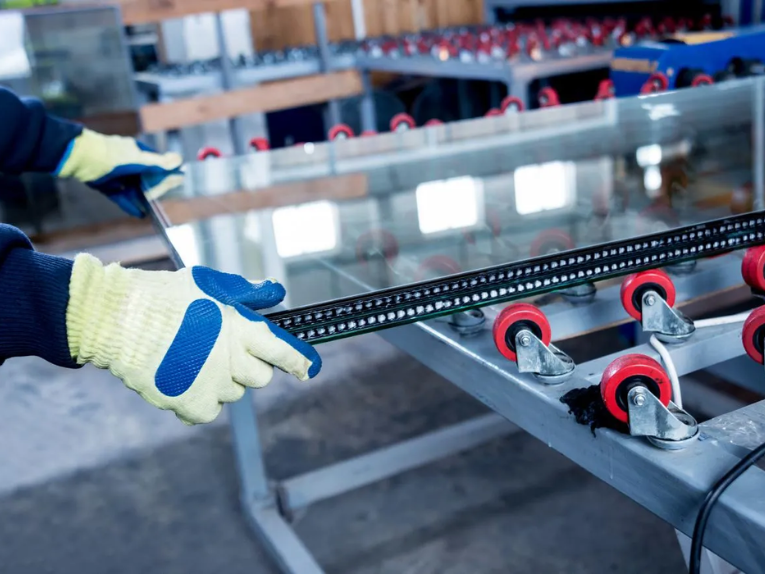-
 Karina
Hi there! Welcome to my shop. Let me know if you have any questions.
Karina
Hi there! Welcome to my shop. Let me know if you have any questions.
Your message has exceeded the limit.

Ultra-high Temperature Thermal Camera Application in Float Glass Production
2025-07-21 08:54:22
Application Background
With the rapid advancement of the glass industry, the demand for premium, high-performance glass is steadily increasing. To meet this growing need, more high-quality float glass production lines are being established worldwide. This surge in production has led to a heightened demand for advanced production control systems and thermal testing equipment. Among the critical components of the float glass manufacturing process—the melting furnace, tin bath, and annealing lehr—precise temperature control and monitoring remain key areas for technological enhancement. To address these challenges, thermal imaging cameras have become indispensable in modern float glass production lines, offering reliable, real-time temperature detection to ensure product quality and process efficiency.
Application SituationIn high-quality float glass production lines, thermal cameras play a crucial role in monitoring temperature across various stages of the manufacturing process. They are primarily deployed in the glass melting furnace, tin bath, annealing lehr, and cold-end equipment. These advanced thermal imaging systems continuously track the temperature of molten glass and the glass ribbon in different thermal zones, enabling real-time process control, enhancing product consistency, and reducing energy consumption.
Glass FurnaceThe glass furnace serves as the heart of the float glass production line, where raw batch materials are subjected to high temperatures for melting, clarification, homogenization, and controlled cooling. This process produces high-quality molten glass, which flows into the tin bath for further shaping. Accurate temperature control within each zone of the furnace is essential to ensure that materials melt correctly and consistently yield premium liquid glass. To achieve this, thermal imaging cameras are strategically positioned to monitor the temperature of the furnace and molten glass in real time. If any temperature deviation is detected, the system automatically triggers an alarm, allowing operators to take immediate corrective action and maintain stable furnace conditions for continuous, high-quality glass production.
Tin BathThe tin bath is the core forming section of the float glass production line, where molten glass is shaped into a continuous ribbon. As the liquid glass flows into the tin bath, it spreads and levels naturally on the surface of molten tin, forming a glass ribbon with the desired width and thickness. As the glass ribbon gradually cools, it is guided by precision equipment such as mechanical pullers, edge blockers, and edge stretchers. Accurate temperature monitoring throughout the tin bath is critical to maintaining uniformity and preventing defects. Thermal imaging cameras are used to monitor the temperature and detect horizontal temperature differentials at the tin bath exit in real time. If abnormal thermal variations are detected, corrective adjustments are made immediately to stabilize the process and ensure a high-quality glass formation rate.
Annealing FurnaceAfter the glass ribbon is formed, it retains a high temperature and must undergo an annealing process to eliminate internal thermal stress and prevent cracking or deformation. The annealing furnace gradually cools the glass in a controlled manner to ensure structural stability. Thermal imaging cameras play a critical role in this stage by continuously monitoring the surface temperature of the glass ribbon throughout different zones of the annealing furnace. These cameras help detect horizontal temperature variations, track cooling trends, and provide real-time data to optimize the annealing curve. Accurate temperature control during this process is essential to ensure the final glass product meets strict quality and durability standards.
Key Benefits
· Increase output and yield
· Improve process control
· Enhance product consistency
· Reduce downtime
Application Advantages
· All-weather Monitoring: The monitoring system in the thermal camera can enable remote, all-weather monitoring without requiring direct supervision.
· Real-time Alarm: When abnormal temperatures are detected, an alarm message is generated. This triggers the linkage of other equipment to stop operations.
· Thermal Image Display: The system displays thermal images in real-time, with clear temperature distribution.
· Temperature Analysis: Real-time temperature data and information can be analyzed at any point within the monitoring range.
Recommended Products by Raythink
TN460U Ultra-high Temperature Thermal Camera

· High Infrared Resolution: A new generation of 12μm infrared thermal imaging detector with 640×512 infrared resolution. Integrated with leading infrared image algorithms, it provides higher definition and more detailed images.
· Ultra-high Temperature Accurate Measurement: With a wide temperature range of 0~2000°C, specifically designed for high-temperature scenarios. It outputs synchronized 25Hz image and temperature data, ensuring consistent and stable high-temperature monitoring.
· Refined Industrial Design, Easy Deployment: Compact and lightweight, offering unlimited integration options. Optional air-cooled/water-cooled shells are available to meet the needs of harsh industrial environments. Three optional lenses allow flexible adaptation to various application scenarios. Open network protocols facilitate integration and secondary development for customers.
Conclusion
As float glass production continues to evolve toward greater automation and quality demands, the integration of advanced thermal imaging technologies has become essential. From melting to forming and annealing, precise, real-time temperature monitoring ensures stable operation, higher product yield, and superior glass quality. Thermal cameras not only enable efficient process control but also contribute to energy savings, predictive maintenance, and production safety. Among the available solutions, the Raythink TN460U Ultra-high Temperature Thermal Camera stands out with its high-resolution imaging, wide temperature range, and industrial-grade adaptability—making it an ideal choice for high-temperature monitoring in modern float glass manufacturing lines. Embracing such cutting-edge technology empowers manufacturers to stay competitive in a rapidly advancing industry.
Tags: Thermal camera, thermal camera application, glass industry

